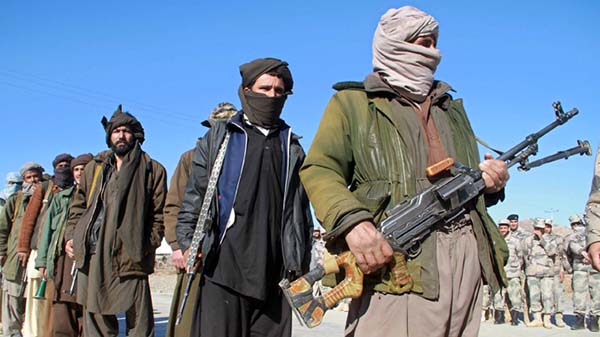AT-KABUL: The Taliban’s spring offensive has shown the insurgents to be bolder as the militant group captured five percent more territory in the country.
In its quarterly report to the Congress, released on Friday, the US Special Inspector General for Afghanistan Reconstruction (SIGAR) said the insurgent group has gained five percent more territory as new Afghan security strategy focuses Afghan security forces in high-priority areas to achieve operational objectives.
“USFOR-A reports that approximately 65.6% of the country’s districts are under Afghan government control or influence as of May 28, 2016, a decrease from the 70.5% reported as of January 29, 2016. Of the 407 districts within the 34 provinces, 268 districts were under government control or influence, 36 districts (8.8%) within 15 provinces were under insurgent control or influence, and 104 districts (25.6 %) were “at risk.” Of the 36 districts under insurgent control or influence, nine districts with a population of 524,072 are under insurgent control and 27 districts with a population of 1.98 million are under insurgent influence,” the report said.
SIGAR said that according to USFOR-A, the Resolute Support mission determines district status by assessing five indicators of stability: governance, security, infrastructure, economy, and communications.
“USFOR-A assesses that the increased insurgent control since January be put in context of the Afghan sustainable security strategy which focuses Afghan forces in high-priority areas to achieve strategic and operational objectives. This strategy includes redeploying forces from checkpoints and lower-priority areas so they are available to conduct offensive operations, gain and maintain the initiative, exploit opportunities, and consolidate tactical gains,” the report elaborated.
Based on the local media reports, over 50 (12.3%) of the country’s districts are facing serious threats from militants, with nine out of the government’s control as of June 28, 2016. Those districts include four in Helmand, two in Badakhshan, and one each in Ghazni, Sar-e Pul, and Zabul provinces.
Earlier, the Ghazni police chief claimed that Taliban insurgents have suicide-bomber and motor-bomb training centers in the Nawa district of the province.
Expressing concerns over increase in the violence against journalists, SIGAR said that according to the Committee to Protect Journalists, 26 journalists were killed in Afghanistan since the US-led invasion following the September 11, 2001, attacks.
“One of the deadliest attacks on foreign workers since the war began nearly 15 years ago occurred on June 20th when a suicide bomber hit a bus carrying Nepali and Indian security guards for the Canadian Embassy killing 14 and wounding nine other guards and civilians,” recalls the report.
The US Department of Defense reported about 9,200 US troops were serving in Afghanistan as of May 31, 2016. This was an increase of 350 over the 8,850 reported as of February 29, 2016. Of the 9,200, about 6,800 are US forces supporting the Resolute Support train, advise, and assist mission.
In July, the US President Barack Obama announced that the United States will maintain approximately 8,400 troops in the country beyond 2016, rather than drawing down to 5,500 troops as previously planned. The US troops are engaged in training, advising, and assisting the Afghan National Defense and Security Forces (ANDSF) and conducting counterterrorism missions. Obama also announced that his administration had requested $3.45 billion in its 2017 budget to assist the ANDSF and promised to recommend to his successor that the United States continue to seek funding for the ANDSF at or near current levels through 2020. Meanwhile, the international community pledged at the NATO Summit in Warsaw more than $800 million annually for 2018–2020 to sustain the ANDSF.
 Afghanistan Times Latest News and Analysis from Afghanistan and the Region
Afghanistan Times Latest News and Analysis from Afghanistan and the Region




